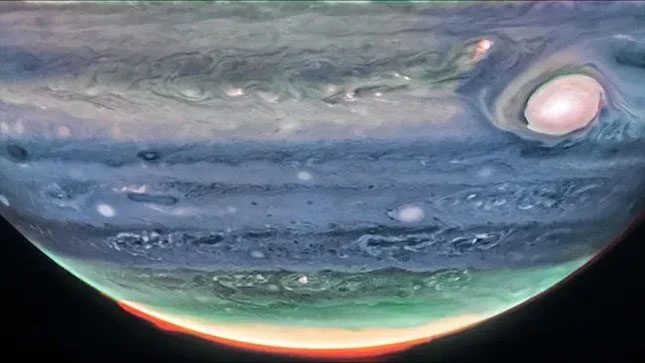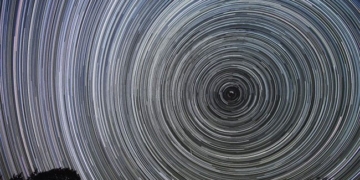New observations from the James Webb Space Telescope (JWST) reveal an unprecedented high-speed jet stream near the equator of Jupiter that moves at twice the speed of a Category 5 hurricane.
Researchers using the Near Infrared Camera (NIRCam) of NASA’s James Webb Space Telescope discovered a high-speed jet stream located along Jupiter’s equator, positioned above the main cloud layers.

Image of a high-speed jet stream located at Jupiter’s equator, above the main cloud layers. (Image Source: NASA, ESA, CSA, STScI, Ricardo Hueso (UPV), Imke de Pater (UC Berkeley), Thierry Fouchet (Paris Observatory), Leigh Fletcher (University of Leicester), Michael H. Wong (UC Berkeley), Joseph DePasquale (STScI))
New Discoveries About Jupiter
The high-speed jet stream is over 4,800 km wide and travels at approximately 515 kph. This phenomenon has never been observed before.
According to the research team, this newly discovered jet stream on Jupiter is moving at double the speed of a Category 5 hurricane on Earth and is situated right above Jupiter’s equator. In fact, all of these images may help researchers understand what is happening in the planet’s atmosphere.
Jupiter is known for its extreme weather, such as the Great Red Spot, a colossal storm that never dissipates, large enough to be seen from a favorable position on Earth using conventional optical telescopes. Importantly, Jupiter’s atmosphere has multiple layers similar to Earth, meaning that wind speeds at different altitudes can contribute to the chaotic climate of this giant planet.
The infrared camera of JWST has captured images of Jupiter’s atmospheric layers, revealing the new jet stream through various features related to the clouds – in conjunction with what the Hubble Space Telescope has observed at deeper layers. With the advanced JWST, researchers hope to gain a clearer picture of the wild Jovian winds.
Michael Wong from the University of California, who leads the Hubble-related observations and is a member of this new study, stated: “We know that the different wavelengths from the James Webb and Hubble telescopes will reveal the three-dimensional structure of storm clouds, but we can also use the temporal data to see how quickly storms develop.”





















































